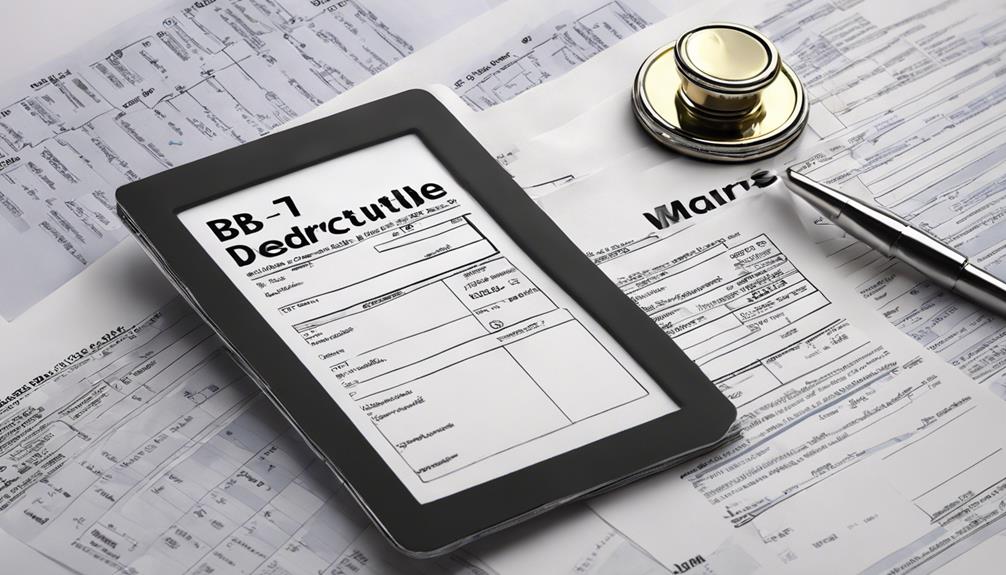We were surprised to find out that the standard monthly premium for Medicare Part B will be $174.70 as of 2024. It’s important to note that this amount may not encompass the full picture.
As we explore further, we'll uncover the factors that can influence this cost and how individuals' incomes play a role in determining the final amount.
Stay tuned to discover the nuances of Medicare Part B pricing and what options exist for managing these expenses effectively.
Key Takeaways
- Standard Part B premium in 2024: $174.70
- Part B annual deductible: $240
- Beneficiaries pay 20% coinsurance after deductible
- Options to save on Part B costs: programs, drug choices, plans
Medicare Part B Premiums
When considering Medicare Part B premiums, it's crucial to understand the standard monthly premium and potential penalties for late enrollment. The standard monthly premium for Medicare Part B in 2024 is $174.70. This premium amount can be higher for individuals with higher incomes due to the Income-Related Monthly Adjustment Amount (IRMAA).
It's important to enroll in Medicare Part B during the initial enrollment period to avoid late enrollment penalties. Beneficiaries may face a late enrollment penalty of 10% for each year not enrolled in Part B, resulting in higher monthly premiums.
In addition to the premium costs, beneficiaries should also be aware of the annual deductible of $240 for Medicare Part B. After meeting the deductible, beneficiaries typically pay 20% coinsurance for Medicare-covered services.
Understanding these aspects of Medicare Part B premiums and costs can help individuals make informed decisions about their healthcare coverage.
Medicare Part B Deductible

The Medicare Part B deductible of $240 annually must be satisfied before beneficiaries can access their Part B coverage. This deductible serves as a financial threshold that beneficiaries need to meet each year before their Part B benefits start. Once this deductible is met, beneficiaries typically pay 20% coinsurance for Medicare-covered services. The purpose of this deductible is to help control costs and encourage appropriate healthcare utilization. It resets yearly, meaning beneficiaries must pay it each year before their Part B benefits apply.
| Medicare Part B Deductible |
|---|
| Amount: $240 annually |
| Purpose: Financial threshold beneficiaries must meet yearly |
| Effect: Controls costs, encourages appropriate healthcare utilization |
| Reset: Annually before Part B benefits apply |
Medicare Part B Coinsurance
Navigating Medicare Part B coinsurance involves understanding how beneficiaries are required to pay 20% of the Medicare-approved amount for covered services after meeting the annual deductible of $240.
This means that once the deductible is met, beneficiaries are responsible for covering a portion of the costs for services like doctor visits, outpatient care, and various medical services.
The 20% coinsurance applies to the Medicare-approved amount, which is the predetermined rate that Medicare agrees to pay for specific services.
It's crucial for beneficiaries to grasp how coinsurance works, as it directly impacts their out-of-pocket expenses for healthcare.
Since the coinsurance amount can differ based on the type of service received under Medicare Part B, understanding these details can assist beneficiaries in planning and managing their healthcare expenditures effectively.
Medicare Part B Out-of-Pocket Costs

Understanding Medicare Part B out-of-pocket costs is essential for beneficiaries to manage their healthcare expenses effectively. When considering Medicare Part B, beneficiaries should be aware of the monthly premium, annual deductible, and coinsurance they may encounter. Below is a breakdown of these costs:
| Cost Type | Amount | Coverage |
|---|---|---|
| Monthly Premium | $174.70 | Helps cover doctors' services and outpatient care |
| Annual Deductible | $240 | Amount beneficiaries pay before Medicare starts paying |
| Coinsurance | 20% of approved amount | Beneficiaries pay 20% after Medicare pays its share |
In some cases, services like clinical laboratory services or outpatient mental health care may be fully covered with $0 cost to beneficiaries. It's important to note that out-of-pocket costs can vary depending on the services received and any additional coverage or assistance programs beneficiaries may have. By understanding these costs, beneficiaries can make informed decisions about their healthcare needs under Medicare Part B.
Ways to Save on Medicare Part B Costs
To effectively manage healthcare expenses under Medicare Part B, exploring various cost-saving strategies can significantly impact beneficiaries' overall spending. Qualifying for the Medicare Savings Program based on income and resources can help lower or eliminate Part B premiums.
Utilizing Extra Help for prescription drug costs is another avenue to manage expenses. Opting for generic drugs over brand-name medications can reduce out-of-pocket costs for Part B covered services.
Enrolling in a Medicare Advantage plan that incorporates Part B coverage may offer additional cost-saving opportunities. Additionally, considering Medigap plans can help cover Part B coinsurance and deductibles, potentially reducing overall healthcare spending. Moreover, many Medicare Advantage plans also include Medicare Part D coverage, which helps to lower the cost of prescription drugs. By bundling both medical and prescription drug benefits, beneficiaries may experience greater convenience and potentially lower out-of-pocket expenses. It’s essential to compare different plans to ensure they meet all healthcare needs while maximizing savings.
Frequently Asked Questions
How Much Does Part B Medicare Cost per Month?
Per month, Medicare Part B costs vary but generally start at $174.70. This amount can increase based on income, reaching up to $594.00.
Late enrollment incurs a 10% penalty for each year of delay. Additionally, there's a $240 annual deductible for Part B.
Following the deductible, beneficiaries typically cover 20% coinsurance for Medicare-covered services. These costs are important considerations when planning for healthcare expenses.
Is Medicare Part B Free at Age 65?
At age 65, Medicare Part B isn't free for most individuals. There's a standard monthly premium to consider. However, assistance may be available based on income and resources.
Late enrollment can lead to penalties, increasing the premiums. It's crucial to be aware of the costs and potential penalties associated with Medicare Part B to make informed decisions about enrollment.
What Are the Income Limits for Medicare Part B for 2023?
When considering Medicare Part B for 2023, it's crucial to note the income limits that determine premium amounts. These limits vary based on filing status, with individuals and married couples facing different thresholds.
Those exceeding these limits pay income-related monthly adjustment amounts (IRMAA) based on their modified adjusted gross income. Understanding how these income limits impact premium costs helps beneficiaries plan for their healthcare expenses effectively.
Does Everyone Pay for Medicare Part B?
Yes, not everyone pays for Medicare Part B. Some individuals may qualify for premium-free Part B based on their work history. It's essential to understand the eligibility criteria to determine if one needs to pay the standard premium of $174.70.
Factors like income-related monthly adjustment amounts (IRMAA) can also impact the premium amount. Late enrollment in Part B can lead to a 10% premium increase for each year of delayed enrollment.
Conclusion
In conclusion, while the costs of Medicare Part B can add up, it's important to remember the value it provides in terms of access to essential medical services.
Despite potential financial challenges, the peace of mind and health security that come with having Medicare coverage are invaluable.
By prioritizing our health and well-being, we can navigate any financial obstacles that may arise and ensure we receive the care we need.









